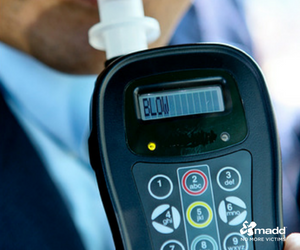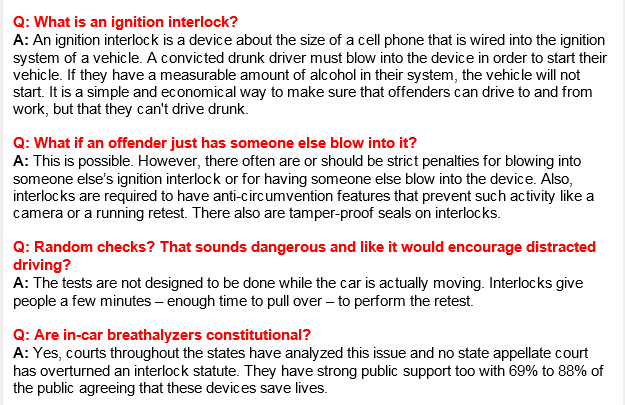 The lives saved by ignition interlocks have been piling up since Arizona became the first state to adopt such a law in 2007. Today, 30 states and the District of Columbia have such protections in place.
The lives saved by ignition interlocks have been piling up since Arizona became the first state to adopt such a law in 2007. Today, 30 states and the District of Columbia have such protections in place.
In-car breathalyzers, as they are also known, have prevented millions of drunk driving attempts.
Yet, safety organizations and non-profit industry leaders like Mothers Against Drunk Driving® are always watching to see what improvements can be made to increase their efficiency.
That’s where interlocks with cameras come in.
A growing movement
Many states already require interlocks to include a camera.
Recently, the Iowa Transportation Department supported a bill to require all ignition interlocks in the state to include a camera.
“There is a possibility that someone other than the intended person is actually blowing into the device and starting it,” said Iowa Governor’s Traffic Safety Bureau Chief Patrick Hoye to WHOTv.com.
The camera doesn’t prevent the car from starting, but it would send the picture back to the DOT, and the driver could then face a fine and potential criminal charges.

“Twenty other states already require this, so it’s not new technology, we’re just trying to enhance the current ignition interlock system here in the state of Iowa,” said Hoye
Currently in Iowa, all repeat drunken driving offenders must install interlock devices. First-time offenders must install the devices if their blood alcohol figures hit higher than 0.10 when at arrest or if they were involved in a crash.
The cameras should become standard by July, according to The Associated Press.
How it works
The typically cube-shaped camera often attach to a windshield. This is yet another step to ensuring that offenders separate drinking from driving. The device takes a picture every time the ignition interlock device test is taken. This image is sent to the ignition interlock company, which, in turn, sends it to the appropriate Department of Transportation as necessary or requested.
What if a driver is sharing the vehicle with another person? The driver can prove it was him or her who took a specific test. The camera does not take pictures the entire time the vehicle is in use.
This can become very important for both the public and the driver.
The public gains the peace of mind of knowing the system is not being circumvented. Another person is not simply taking the test for the offender. If another person fails the test, the offender has a valuable tool to prove that he did not take the test. This could mean the difference between jail time or extended time on the device or not.
Additionally, interlocks with cameras are more difficult to tamper with or alter, ensuring that public safety cannot be infringed upon.


